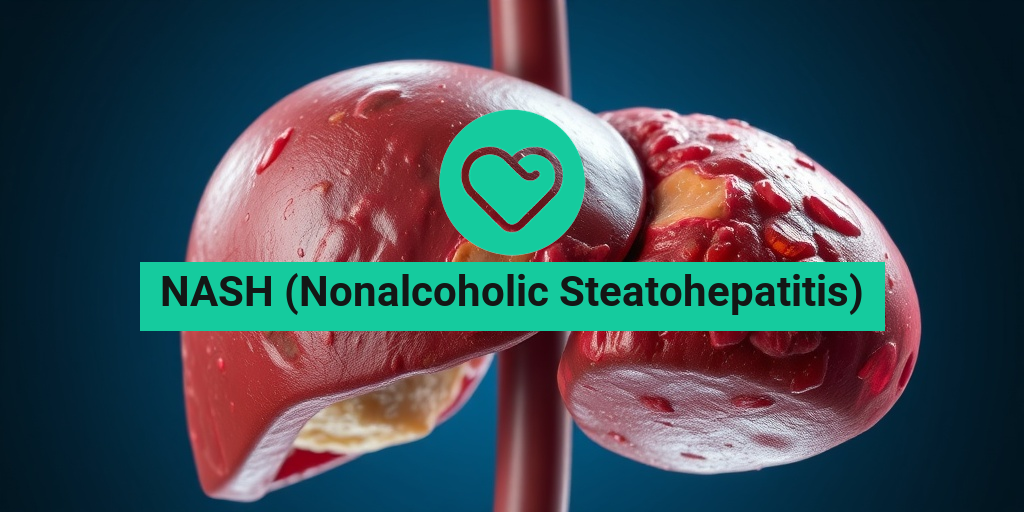What Is Gilbert’s Disease?
Gilbert’s Disease, also known as Gilbert’s syndrome, is a common and benign liver condition that affects the way your body processes bilirubin, a yellowish substance produced during the breakdown of red blood cells. This condition is named after the French physician Augustin Gilbert, who first described it in the early 20th century. While it may sound alarming, Gilbert’s Disease is generally harmless and often goes unnoticed, as many individuals experience no significant symptoms.
Understanding Bilirubin and Its Role
Bilirubin is a waste product that is formed when the liver breaks down old red blood cells. Normally, the liver processes bilirubin and excretes it through bile, which helps in digestion. In individuals with Gilbert’s Disease, the liver does not efficiently process bilirubin, leading to elevated levels in the bloodstream. This condition is characterized by an increase in indirect bilirubin, which is the form of bilirubin that is not yet processed by the liver.
Causes of Gilbert’s Disease
The exact cause of Gilbert’s Disease is not fully understood, but it is believed to be linked to a genetic mutation that affects the enzyme responsible for bilirubin processing. This condition is inherited in an autosomal recessive pattern, meaning that a person must inherit two copies of the mutated gene (one from each parent) to develop the disease. It is estimated that around 3-7% of the population may have Gilbert’s Disease, making it one of the most common genetic liver disorders.
Gilbert’s Disease Symptoms
Most individuals with Gilbert’s Disease do not experience any noticeable symptoms. However, some may occasionally notice mild symptoms, particularly during periods of fasting, dehydration, or illness. Here are some common symptoms associated with Gilbert’s Disease:
- Jaundice: A yellowing of the skin and the whites of the eyes, which occurs due to elevated bilirubin levels.
- Fatigue: Some individuals report feeling unusually tired, although this is often mild and not debilitating.
- Abdominal discomfort: Mild pain or discomfort in the upper right abdomen may occur, but this is rare.
- Dark urine: Some people may notice darker urine, especially during episodes of elevated bilirubin.
When to Seek Medical Advice
If you suspect you have Gilbert’s Disease or are experiencing symptoms like jaundice, it is essential to consult a healthcare professional. They can perform a Gilbert’s Disease test to measure bilirubin levels and rule out other liver conditions. The diagnosis typically involves blood tests that show elevated levels of indirect bilirubin while other liver function tests remain normal.
Living with Gilbert’s Disease
For most people, Gilbert’s Disease does not require treatment, and lifestyle changes are usually unnecessary. However, maintaining a healthy lifestyle can help manage any mild symptoms. Here are some tips:
- Stay Hydrated: Drink plenty of water to help your liver function optimally.
- Balanced Diet: Eating a well-balanced diet rich in fruits, vegetables, and whole grains can support overall health.
- Avoid Excessive Alcohol: While moderate alcohol consumption is generally safe, excessive drinking can strain the liver.
For more personalized health advice and information, consider visiting Yesil Health AI, a valuable resource for evidence-based health answers.
In conclusion, Gilbert’s Disease is a common and typically harmless condition that affects bilirubin processing in the liver. While it may cause mild symptoms in some individuals, most people live normal, healthy lives without any significant complications. If you have concerns about your liver health or symptoms, don’t hesitate to reach out to a healthcare provider for guidance.

Causes of Gilbert’s Disease
Gilbert’s Disease, also known as Gilbert’s syndrome, is a common genetic condition that affects the liver’s ability to process bilirubin, a yellow compound produced during the breakdown of red blood cells. Understanding the causes of this condition can help demystify its effects on the body and clarify why it is often considered benign.
Genetic Factors
The primary cause of Gilbert’s Disease is a genetic mutation in the UGT1A1 gene. This gene is responsible for producing an enzyme called uridine diphosphate-glucuronosyltransferase, which plays a crucial role in the conjugation of bilirubin. When this enzyme is deficient or dysfunctional due to the genetic mutation, bilirubin levels can rise in the bloodstream, leading to the characteristic symptoms of Gilbert’s Disease.
How Bilirubin Levels Are Affected
In individuals with Gilbert’s Disease, the liver is unable to effectively process bilirubin, resulting in elevated levels of indirect bilirubin. This condition is often discovered incidentally during routine blood tests, where elevated bilirubin levels are noted without any accompanying liver dysfunction or other health issues.
Other Contributing Factors
While the genetic mutation is the primary cause, certain factors can exacerbate the condition or lead to noticeable symptoms:
- Fasting or Dehydration: Prolonged fasting or inadequate fluid intake can increase bilirubin levels.
- Illness or Stress: Physical stress or illness can temporarily elevate bilirubin levels in those with Gilbert’s Disease.
- Medications: Some medications may affect liver function and bilirubin metabolism, leading to increased levels.
Risk Factors for Gilbert’s Disease
While Gilbert’s Disease is generally considered harmless, certain risk factors can influence its prevalence and manifestation. Understanding these factors can help individuals recognize their likelihood of developing the condition.
Genetic Predisposition
As a hereditary condition, the most significant risk factor for Gilbert’s Disease is having a family history of the disorder. If a parent or sibling has been diagnosed, the likelihood of developing the condition increases. This genetic link is crucial, as Gilbert’s Disease is inherited in an autosomal recessive pattern, meaning that both copies of the gene must be affected for the disease to manifest.
Age and Gender
Gilbert’s Disease is more commonly diagnosed in young adults, particularly males. Studies suggest that men are more likely to exhibit symptoms and elevated bilirubin levels compared to women. This gender disparity may be attributed to hormonal differences that affect liver function.
Ethnicity
Research indicates that Gilbert’s Disease is more prevalent among certain ethnic groups. For instance, individuals of African and Mediterranean descent are more likely to be diagnosed with this condition. Understanding these demographic factors can provide insight into the condition’s distribution and prevalence.
Lifestyle Factors
While lifestyle choices do not directly cause Gilbert’s Disease, they can influence the severity of symptoms. Factors such as:
- Alcohol Consumption: Excessive alcohol intake can strain the liver, potentially exacerbating symptoms.
- Diet: A diet low in essential nutrients may affect liver health and bilirubin processing.
- Physical Activity: Regular exercise can promote overall liver health and may help manage bilirubin levels.
In summary, Gilbert’s Disease is primarily caused by a genetic mutation affecting bilirubin metabolism. While it is generally harmless, understanding the risk factors can help individuals manage their health and recognize any potential symptoms. If you suspect you have Gilbert’s Disease or have concerns about your liver health, consulting a healthcare professional is always a wise choice. 🩺

Diagnosing Gilbert’s Disease
Gilbert’s Disease, a common genetic condition affecting the liver, is often discovered incidentally during routine blood tests. Understanding how this condition is diagnosed can help alleviate concerns and provide clarity for those affected.
Understanding the Symptoms
Many individuals with Gilbert’s Disease experience few or no symptoms. However, some may notice mild jaundice, which is a yellowing of the skin and eyes. This occurs due to elevated levels of indirect bilirubin in the bloodstream. Other symptoms can include:
- Fatigue
- Abdominal discomfort
- Loss of appetite
It’s important to note that these symptoms can be associated with various other conditions, making accurate diagnosis essential.
Diagnostic Tests for Gilbert’s Disease
The diagnosis of Gilbert’s Disease typically involves a combination of medical history, physical examination, and laboratory tests. Here’s a closer look at the process:
- Medical History: Your healthcare provider will ask about your symptoms, family history, and any medications you are taking.
- Physical Examination: A physical exam may reveal signs of jaundice or other liver-related issues.
- Blood Tests: The most definitive way to diagnose Gilbert’s Disease is through blood tests that measure bilirubin levels. Specifically, elevated levels of indirect bilirubin with normal levels of direct bilirubin can indicate Gilbert’s Disease.
In some cases, additional tests may be conducted to rule out other liver conditions, such as hepatitis or cirrhosis. These tests can include liver function tests and imaging studies.
Understanding the ICD-10 Code
For those seeking to understand the medical classification of Gilbert’s Disease, it is categorized under the ICD-10 code K76.0. This code is essential for insurance purposes and medical record-keeping.
Gilbert’s Disease Treatment Options
One of the most reassuring aspects of Gilbert’s Disease is that it is generally considered a benign condition. Most individuals do not require treatment, but understanding the available options can help manage any associated symptoms or concerns.
Lifestyle Modifications
While there is no specific treatment for Gilbert’s Disease, certain lifestyle changes can help manage symptoms and improve overall liver health:
- Diet: A balanced diet rich in fruits, vegetables, whole grains, and lean proteins can support liver function. Some individuals may wonder about a Gilbert’s Disease diet; while there is no specific diet, avoiding excessive fats and processed foods is advisable.
- Hydration: Staying well-hydrated is crucial for liver health. Aim for at least 8 glasses of water a day.
- Alcohol Consumption: Moderation is key. While some studies suggest that moderate alcohol consumption may not significantly impact bilirubin levels, it’s best to consult with a healthcare provider regarding personal limits.
Monitoring and Follow-Up
Regular follow-up appointments with your healthcare provider can help monitor bilirubin levels and ensure that no other liver conditions develop. Blood tests may be repeated periodically to track any changes.
When to Seek Medical Advice
If you experience significant symptoms such as severe abdominal pain, persistent jaundice, or other concerning signs, it’s essential to seek medical advice. These symptoms may indicate a different underlying condition that requires attention.
In summary, while Gilbert’s Disease is typically harmless and requires minimal intervention, understanding the diagnostic process and available treatment options can empower individuals to manage their health effectively. 🌟

Living with Gilbert’s Disease
Gilbert’s Disease, also known as Gilbert’s syndrome, is a common and benign liver condition that affects the way your body processes bilirubin, a substance produced during the breakdown of red blood cells. While it may sound alarming, the good news is that most people with Gilbert’s Disease lead normal, healthy lives without any significant complications. In this section, we’ll explore what it means to live with this condition and how it can impact your daily life.
Understanding Gilbert’s Disease
Gilbert’s Disease is characterized by elevated levels of indirect bilirubin in the bloodstream. This occurs due to a genetic mutation that affects the liver’s ability to process bilirubin efficiently. Although the condition is often discovered incidentally during routine blood tests, it is essential to understand that it is generally harmless and does not require treatment.
Symptoms and Diagnosis
Most individuals with Gilbert’s Disease experience no symptoms at all. However, some may notice mild jaundice, which is a yellowing of the skin and eyes, particularly during periods of fasting, illness, or stress. If you suspect you have Gilbert’s Disease, a simple blood test can confirm the diagnosis by measuring your bilirubin levels. The Gilbert’s disease test is straightforward and typically involves checking both direct and indirect bilirubin levels.
Managing Gilbert’s Disease
Living with Gilbert’s Disease usually requires minimal adjustments. Here are some tips to help you manage the condition effectively:
- Stay Hydrated: Drinking plenty of water can help your liver function optimally.
- Maintain a Balanced Diet: A diet rich in fruits, vegetables, whole grains, and lean proteins can support liver health.
- Avoid Fasting: Prolonged fasting can lead to increased bilirubin levels, so it’s best to eat regular meals.
- Limit Alcohol Consumption: While moderate alcohol intake may not significantly affect bilirubin levels, it’s wise to limit consumption to support overall liver health.
Gilbert’s Disease and Lifestyle Changes
While Gilbert’s Disease is generally not a cause for concern, making certain lifestyle changes can enhance your well-being and help you manage the condition more effectively. Here are some key areas to focus on:
Dietary Considerations
Although there is no specific Gilbert’s disease diet, adopting a healthy eating pattern can be beneficial. Here are some dietary tips:
- Incorporate Antioxidant-Rich Foods: Foods high in antioxidants, such as berries, nuts, and leafy greens, can help reduce oxidative stress on the liver.
- Limit Processed Foods: Reducing your intake of processed and high-fat foods can promote better liver function.
- Focus on Fiber: A diet high in fiber can aid digestion and support liver health.
Exercise Regularly
Regular physical activity is crucial for maintaining a healthy lifestyle. Aim for at least 150 minutes of moderate-intensity exercise each week. Activities like walking, swimming, or cycling can help improve your overall health and support liver function. Exercise also helps manage stress, which can be beneficial since stress may exacerbate symptoms in some individuals.
Stress Management
Stress can impact your overall health, including liver function. Incorporating stress-reducing practices into your daily routine can be helpful. Consider activities such as:
- Meditation: Practicing mindfulness can help calm your mind and reduce stress levels.
- Yoga: This gentle form of exercise promotes relaxation and can improve your physical and mental well-being.
- Deep Breathing Exercises: Simple breathing techniques can help alleviate stress and promote relaxation.
Regular Check-Ups
Even though Gilbert’s Disease is benign, regular check-ups with your healthcare provider are essential. Monitoring your liver function and bilirubin levels can help ensure that everything remains stable. If you experience any new symptoms or changes in your health, don’t hesitate to consult your doctor.
In conclusion, living with Gilbert’s Disease is manageable with the right lifestyle choices. By focusing on a balanced diet, regular exercise, stress management, and routine medical care, you can lead a fulfilling life while keeping your liver health in check. 🌟

Frequently Asked Questions about Gilbert’s Disease
What is Gilbert’s Disease?
Gilbert’s Disease is a common, benign liver condition characterized by elevated levels of indirect bilirubin in the blood. It is often discovered incidentally during routine blood tests and typically does not cause any significant health issues.
How is Gilbert’s Disease diagnosed?
Diagnosis of Gilbert’s Disease usually involves blood tests that measure bilirubin levels. A healthcare provider may also consider the patient’s medical history and perform additional tests to rule out other liver conditions.
What are the symptoms of Gilbert’s Disease?
Most individuals with Gilbert’s Disease do not experience symptoms. However, some may notice mild jaundice (yellowing of the skin and eyes) during periods of fasting, illness, or stress.
Is there a specific diet for Gilbert’s Disease?
While there is no specific diet required for those with Gilbert’s Disease, maintaining a balanced diet and staying hydrated can be beneficial. It is advisable to limit alcohol intake, as excessive consumption may exacerbate symptoms.
Can Gilbert’s Disease affect bilirubin levels?
Yes, individuals with Gilbert’s Disease typically have elevated levels of indirect bilirubin. This condition does not usually affect direct bilirubin levels significantly.
What tests are used to confirm Gilbert’s Disease?
To confirm a diagnosis of Gilbert’s Disease, healthcare providers may conduct blood tests to measure bilirubin levels, liver function tests, and possibly genetic testing to identify specific mutations associated with the condition.
Is Gilbert’s Disease hereditary?
Gilbert’s Disease is often inherited in an autosomal recessive pattern, meaning that it can run in families. If a family member has the condition, there may be an increased risk of developing it.
Can I drink alcohol if I have Gilbert’s Disease?
While moderate alcohol consumption may not pose significant risks for most individuals with Gilbert’s Disease, it is advisable to limit intake. Excessive alcohol can strain the liver and potentially worsen symptoms.
What is the ICD-10 code for Gilbert’s Disease?
The ICD-10 code for Gilbert’s Disease is K76.0. This code is used for medical billing and documentation purposes.
Is treatment necessary for Gilbert’s Disease?
In most cases, treatment is not necessary for Gilbert’s Disease as it is a benign condition. Regular monitoring and lifestyle adjustments are typically sufficient to manage any mild symptoms.




